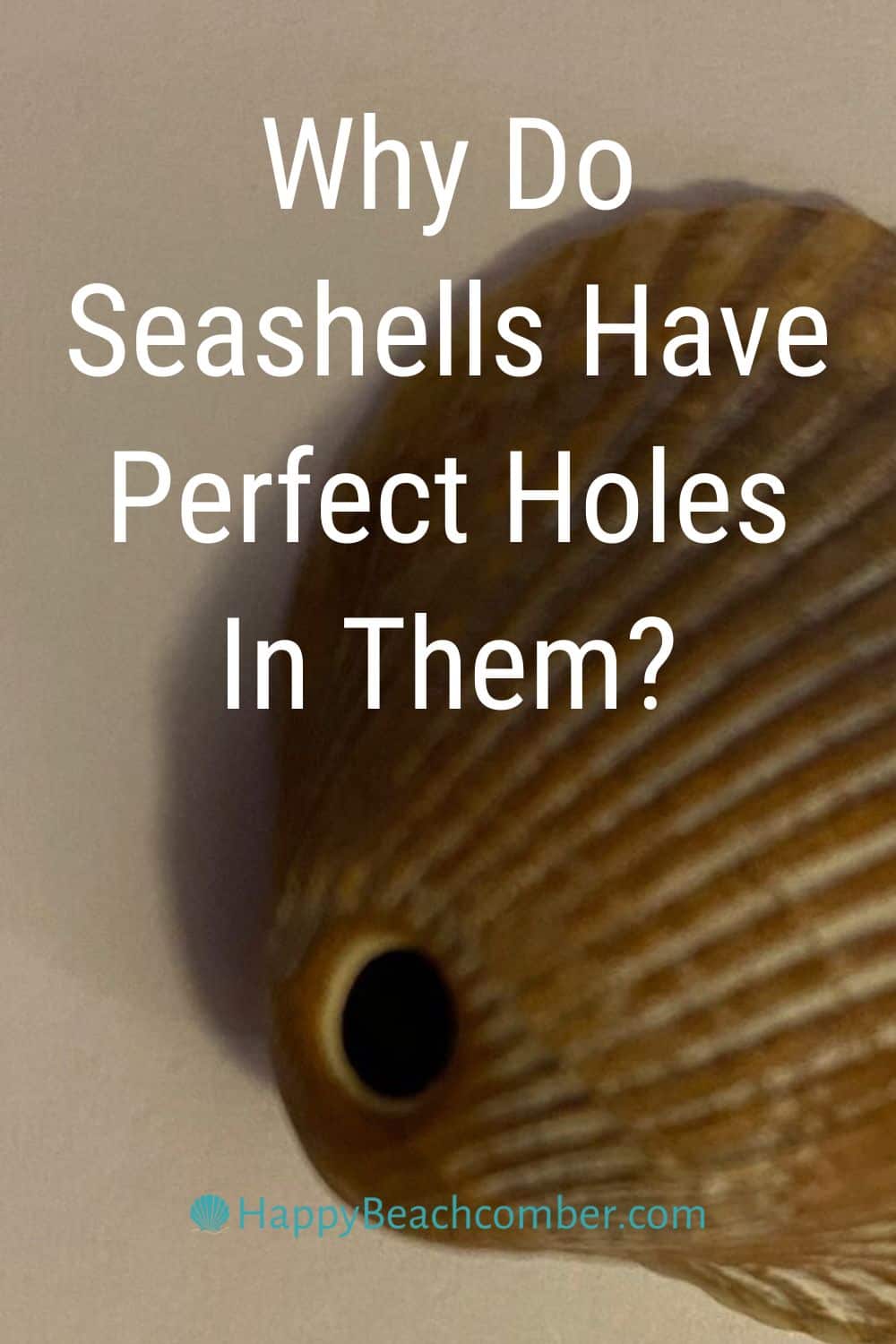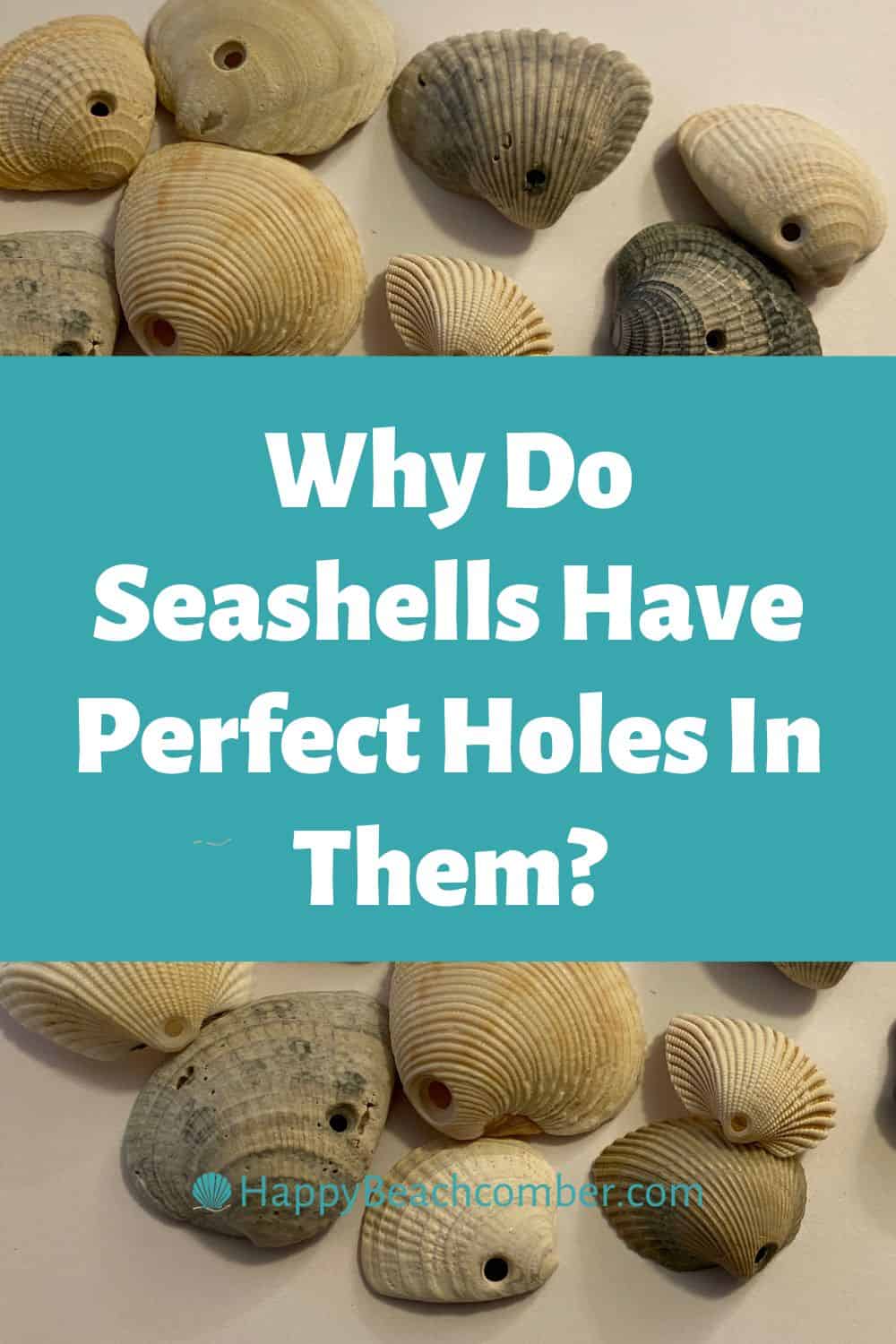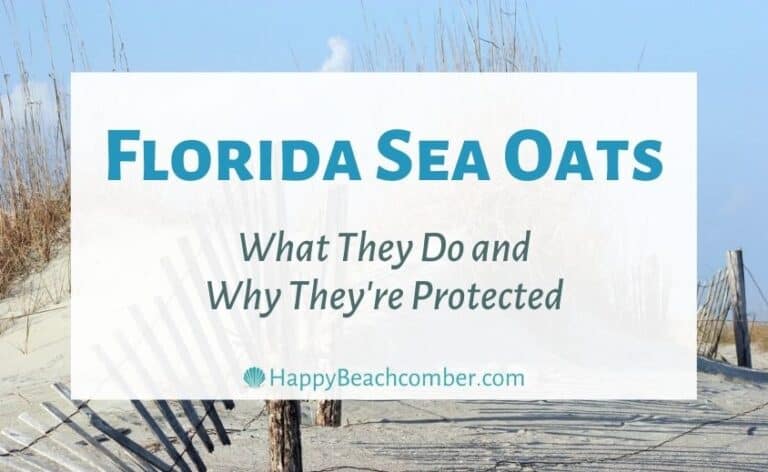Why Do Seashells Have Perfect Holes In Them?
No, those little holes weren’t put there so you can make jewelry. The reason seashells have perfect holes in them is all about survival and the natural order of prey and predators.
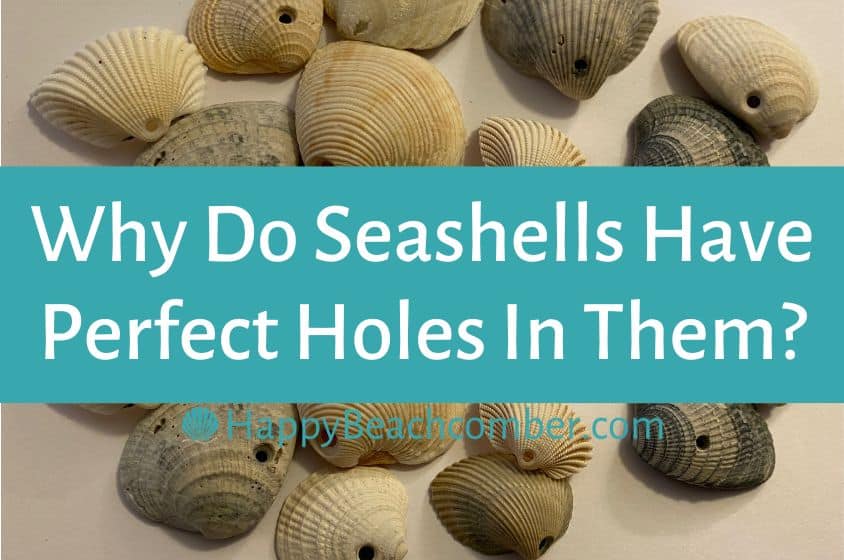
The most common seashells you find on the beach are shaped like what we think of as clam shells. They are actually the shells of bivalves, which are marine snails. These bivalve mollusks are known as surf clams, probably named such due to the shape of their shells.
Unfortunately for surf clams, they are the favorite meal of another mollusk called a Moon snail. That’s where the hole comes from.

The Predator and Its Prey
What you’re seeing are drill holes made by a carnivorous Moon snail. As Dr. Joseph Richardson explains, Moon snails like to feed on bivalves such as surf clams, but they don’t have the ability to force a bivalve shell open. Like other mollusks, what the snail does have is a “radula”. This ribbon-like tongue is covered with sharp tiny denticles, which makes it work like a rasp with extremely sharp teeth.
Using the radula, the snail drills a tiny, perfectly round hole through the clam shell to reach the soft-bodied animal inside. What happens next is disgusting, so skip the next paragraph if you’re squeamish!
One source claims that using the radula, the snail digs around inside the clam shell, slashing back and forth to shred the animal. This process continues until the snail basically turns the clam into soup that it can suck out of the still closed clam shell. However, the Dolphin Research Institute says that the animal is basically dissolved by digestive enzymes secreted by the Moon snail through its radula. Other information suggests that the process is actually a combination of the two methods.
So now you know, any time you see a perfect little hole in a shell, that means its original inhabitant died a pretty horrible death. But of course if the shell you find is great for making a necklace, then you can thank the snail for drilling the exact hole you need.
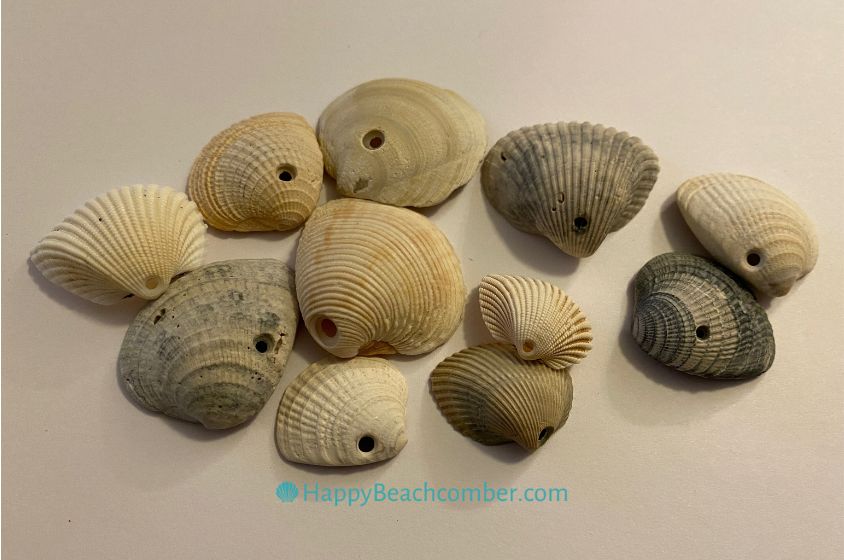
How Do Moon Snails Find Their Prey?
You’ll notice that you rarely, if ever, find a whole surf clam with both shells intact and a living creature inside. That’s because they have a muscular “foot” they can use to bury themselves in the sand below the waterline. That helps hide them from predators, but not completely.
In order to live, surf clams have siphons that work like tiny periscopes and extend upward just above the surface of the sand. One siphon inhales water, bringing in oxygen and food. The other exhales to eliminate waste.
A Moon snail will cruise along the sand underwater looking for the signs made by those siphons at work. When it locates a surf clam, it latches on with its foot to keep the clam from escaping while it drills its hole.
Quite often the surf clam is history after that, but not always. Remember that the clam has a muscular foot too, and sometimes he can use it to wiggle free from the snail trying to devour it. Evidence of this is seen on surf clam shells that have only a partially drilled hole. You can see the indentation where the Moon snail started drilling, but the hole doesn’t go all the way through.
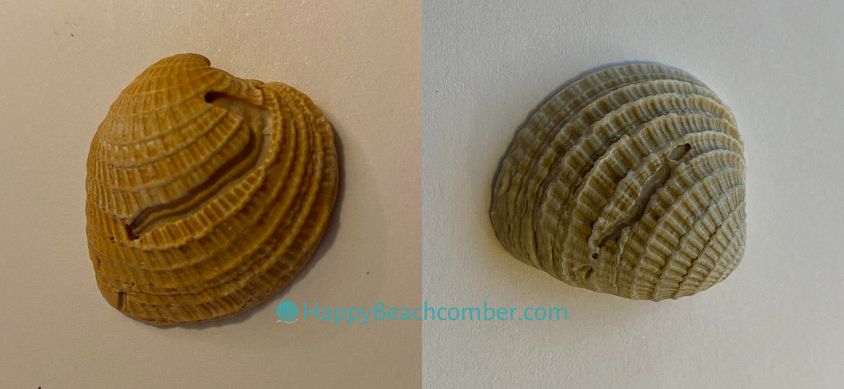
To better understand, watch this 2-minutes video of a Moon Snail attacking a cockle. It’s a little surprising to see such a dramatic and vicious fight between what are basically two sea snails.
What Other Marine Snails Are Predators or Prey?
Many marine snails are herbivores, meaning they eat plants such as seaweed and algae. Others are omnivores, or meat eaters, and these are the snails who feed on their own kind – cannibals, if you will.
Omnivorous snails include:
- Moon Snail (aka Atlantic Moon Snail or Shark Eye)
- Atlantic Oyster Drill
- Lightning Whelk
- New England Dog Whelk
- Crown Conch
Prey of omnivorous snails:
- Clams
- Mussels
- Scallops
- Arks
- Cockles
- Periwinkles
- American Oysters
In fact, omnivorous snails prey on all kinds of bivalve mollusks, and they will even eat their own kind. That is, a Moon snail will eat a Moon snail.
I don’t know about you, but learning what causes perfect holes in seashells made me look at them in a whole new way. How interesting that a beautiful shell was once the home of a creature who fought for his life and lost.
Other Seashore Curiosities
The beach can be a great learning experience for your kids and grandkids. For one, you want them to respect the environment and learn to care for the places we love to visit. The common slogan at beaches is “leave only footprints”.
That includes being kind to the local wildlife, and in my experience some people don’t realize they may be doing harm. As explained in What NOT To Do At The Beach, some common practices are a bad idea for several reasons.
For all the questions your kids come up with, find quick answers at FAQs About The Beach. For your own info you might also want to read Do Sunscreens Expire, Health Benefits of the Ocean, and Florida Sea Oats – What They Do and Why They’re Protected. Got a question I haven’t answered? Please leave a comment below!
If you enjoyed this article please share on Pinterest and help spread the word!
